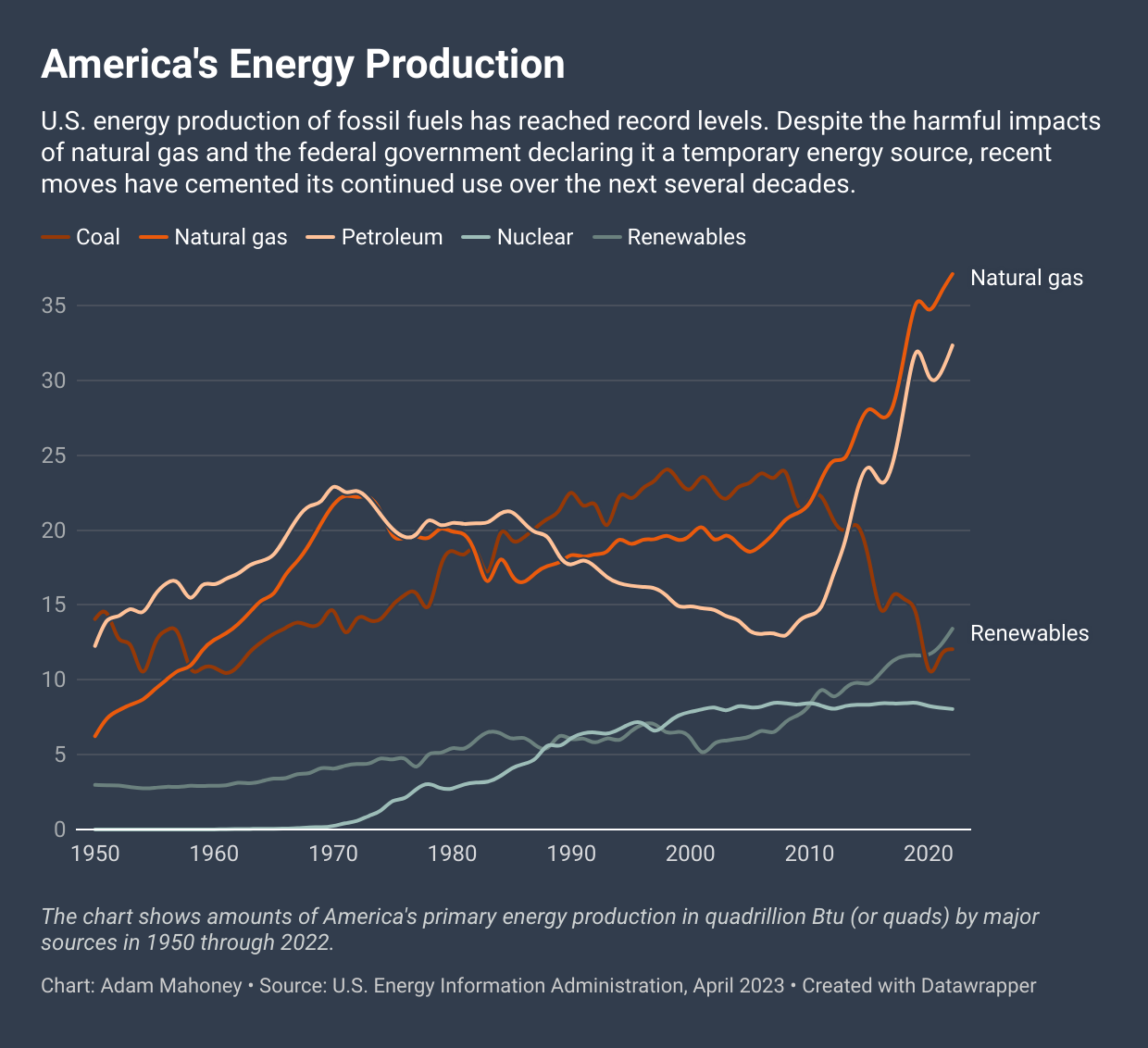News
Bitcoin Creates New Environmental Injustices for Black Texans

Bitcoin is more than just a shiny new way to lose money. It’s also fueling Texas’s energy woes as the state braces for another year of record-breaking heat. And Black communities are caught in the crosshairs of climate change, those booming data centers, and the power plants needed to meet both demands.
Last year, during the deadliest summer in Texas history, black people bore the brunt of the heat. Stories like the deaths of a 5-day-old black baby and a 66-year-old black postal worker from heat illness led to national outrageThe brutal summer only fueled a fire that the state’s grid manager, the Electric Reliability Council of Texas, had spent years trying to put out.
After a 2021 winter storm exposed how unprepared the state was for severe weather, Texas scrambled to find ways to ensure it would have enough electricity to handle a disaster.
Their solution: new fossil-fuel power plants.
But while the state claims that these new power plants meet demand caused by adverse weather conditions and population growth, a new ERCOT Forecast says that as the state’s energy demand will double in the next six years, most of the demand will come from excessive consumption of water and energy data centers for supercomputers for artificial intelligence and cryptographic processing.
In essence, that means the state is building polluting plants that have historically decimated black communities, in part for industries that experts say are increasing economic inequality and discrimination against African Americans.
Despite analyses showing that clean energy sources such as wind and solar are largely more reliable and less expensive to produce than energy from fossil fuels, the state decided to subsidise them after last summer. New gas-fired power plants worth $10 billion.
Across the country, low-income people of color are exposed to the most pollution from power plants and have the higher risk of death from such pollution. In Texas, more than 75 percent of the state’s gas-fired power plants are located in areas where the population has a higher-than-average share of people of color, according to a Capital B analysis of EPA data.
Initial documents reviewed by Capital B show that the trend of placing these facilities in communities of color could continue. Companies that applied for funding and said about half (45%) of the new plants will be in communities with a higher-than-average black population.
“They’re trying to use these ‘volatile’ weather events, the freezing and the hot, as justification for all these new gas plants,” Brittney Stredic told Capital B last year. She’s been part of a coalition of community members who’ve been pushing for a new gas plant and pipeline in her Houston neighborhood for several years. “But we don’t need it.”
To know more: A gas storage facility and a new oil pipeline are upending life in this black community
While Texas has recently established itself as the country’s up-and-coming Renewable Energy Capital of the United StatesThese moves represent a step backwards for the state and for the climate.
Climate change and the intensification of winters and summers are largely caused by the burning of fossil fuels. And Texas’s response is to align itself with industries that have been shown to harm black communities, experts say.
“There are so many negatives to cryptocurrency, but unfortunately the industry has a lot of money and has recently used their money to get favorable policies in Washington, D.C. and places like Texas,” said Algernon Austin, director of Race and Economic Justice at the Center for Economic and Policy Research. Austin has spent years studying how the get-rich-quick system has targeted the country’s most vulnerable.
“Cryptocurrencies are a brilliant new way to lose money. The analysis that has been done suggests that, if anything, they have worked to increase inequality,” he added. “It’s worrying that it’s creating an environmental problem on top of all that.”
Artificial intelligence and crypto-mining consume a lot of energy and water because of the power required to process complex algorithms and transactions. As these supercomputers, which are often three times the size of the average U.S. home, work in bursts, they generate enormous amounts of heat that require constant cooling and demand electricity.
Texas already consumes more energy than any other state, and the pollution from that consumption is palpable. Despite representing 9% of the nation’s population, the state is responsible for 13% of all pollution from power plants and 15% of all pollution from natural gas plants.
The Get Rich Quick Mentality
It’s not all Texas’ fault that the new nation infatuation with these energy-intensive uses of the Internet is driving energy demand. The energy required to run a single AI search, for example, is between 10 and 30 times greater than the energy required to run a traditional Google search. However, its constant focus on attracting business over almost every other consideration can be attributed to the state.
Texas residents and experts say that, in many ways, the state’s energy woes are caused by a get-rich-quick mentality that prioritizes attractive commercial activities over the resulting strain on the power grid, water supplies and rapidly growing population.
But the state’s plight exemplifies the crossroads the nation faces as it seeks to strengthen its electric grid: one that can support its most vulnerable populations, such as Black communities living near fossil-fuel power plants, or align itself with industries that further exacerbate problems.

Entergy CEO and Chairman Eliecer Viamontes cited that statewide desire as a reason for his company’s decision to build new fossil-fuel power plants in Texas. His company is one of two that have filed plans to open new gas-fired power plants in a predominantly black and Latino Houston suburb, where some neighborhoods already face cancer risks from air pollution 46 times higher than federal limits.
“We need to think about how it aligns with what the leadership of the state of Texas is pushing for, which is that we need to be the number one state for business, the number one state for economic growth,” Viamontes said. She saidWithout the new plants, he said, “there is a risk of losing economic growth in the region.”
But economic growth for whom, Austin asks. The rise of cryptofinance in particular, a tool initially marketed as a way to reduce economic inequality, shows that mindset may be working directly against improving life in black communities.
As state residents were baked by triple-digit heat in August, the grid operator gave millions of dollars data center and Bitcoin mining companies to stop using so much energy. It’s a tactic Texas may have to use again for several summers to come. (To keep air conditioners running that summer, the state also got an emergency order from the U.S. Department of Energy, allowing power plants to exceed pollution limits to produce more energy. That left communities of color facing the stifling double threat of heat and air pollution.)
“We’ve been incredibly uninformed because our local leaders haven’t made it a priority to talk to us about what’s happening,” said Kimberlee Walter, an activist in a Texas community that’s home to a crypto-finance company that received $32 million last summer to use less energy. “These companies are wasting precious resources, driving up our energy bills, and destabilizing an already very unstable grid.”
Meanwhile, in recent years, polls have found that blacks are more likely than white people to invest in cryptocurrency and more likely to mistakenly believe that the industry is regulated and safe. Black cryptocurrency investors are also more likely than white cryptocurrency investors to say they have borrowed money to make their investments.
Cryptocurrencies have also increased costs for those who aren’t even invested in the currency. In Texas, they’ve already increased electricity costs for non-mining Texans by $1.8 billion annually, or 4.7%, according to conservative estimates from consulting firm Wood Mackenzie.
A large portion of these crypto-mining operations have opened just outside the Dallas metropolitan area, which is among the fastest-growing places for blacks and is already home to 1.2 million blacks. At least one of the proposed new fossil-fuel power plants in an above-average black community would be built exclusively to power a crypto-mining supercomputer.
 A natural gas power plant lights up the sky next to a 90 percent black neighborhood in Beaumont, Texas. (Adam Mahoney/Capital B)
A natural gas power plant lights up the sky next to a 90 percent black neighborhood in Beaumont, Texas. (Adam Mahoney/Capital B)
As natural gas production increases nationwide, energy companies and government agencies are “not adequately addressing the history of devastation that oil and gas have had in the Gulf South and on communities of color,” said Robert Bullard, the father of environmental justice.
While clean energy is growing, Texas has a problem getting it to households. The growth of renewable energy requires expensive construction of transmission lines to move power from urban consumers to rural areas where wind and solar farms are located. But some residents believe the cost and infrastructure construction are worth it.
“The truth is that gas failed us when we needed it most,” the state’s Sierra Club chapter wrote after the subsidies for new plants were announced. “We need to reduce demand on the grid by making buildings more energy efficient, and we need to invest more in local and distributed energy systems like rooftop solar and battery storage. Our climate has changed, no matter how much Texas’ fossil-fuel-funded politicians deny it.”
News
Cryptocurrency Price August 1: Bitcoin Dips Below $65K; Solana, XRP Down Up To 8%

Major cryptocurrencies fell in Thursday trading following the Federal Reserve’s decision to keep its key interest rate unchanged. Overnight, the U.S. Federal Reserve kept its key interest rate at 5.25-5.5% for the eighth consecutive time, as expected, while also signaling the possibility of a rate cut at its next meeting in September. The unanimous decision by the Federal Open Market Committee reflects a continued wait-and-see approach as it monitors inflation trends.
CoinSwitch Markets Desk said: “Bitcoin has fallen below $65,000 after the US Federal Reserve announced it would keep interest rates unchanged. However, with markets now anticipating rate cuts at the next Federal Reserve meeting in September, the outlook for a Bitcoin rally by the end of the year has strengthened.”
Meanwhile, CoinDCX research team said: “The crypto market has plunged after the Fed decision. Tomorrow’s US unemployment rate announcement is expected to induce more volatility, with the ‘actual’ figure coming in higher than the ‘expected’ one, which is positive for cryptocurrencies.”
At 12:21 pm IST, Bitcoin (BTC) was down 3.2% at $64,285, while Ethereum was down nearly 4.5% at $3,313. Meanwhile, the global market cryptocurrency The market capitalization fell 3.6% to around $2.3 trillion in the last 24 hours.
“Bitcoin needs to clear its 200-day EMA at $64,510 to consolidate further. Otherwise, a retest of $62,000 could be in the cards,” said Vikram Subburaj, CEO of Giottus.
Altcoins and meme coins, such as BNB (3%), Solana (8%), XRP (5.7%), Dogecoin (5%), Cardano (4.6%), Avalanche (4.3%), Shiba Inu (3.8%), Polkadot (3.4%), and Chainlink (4%) also saw declines.
The volume of all stablecoins is now $71.64 billion, which is 92.19% of the total cryptocurrency market volume in 24 hours, according to data available on CoinMarketCap. Bitcoin’s dominance is currently 54.99%. BTC volume in the last 24 hours increased by 23.3% to $35.7 billion.
(Disclaimer: Recommendations, suggestions, opinions and views provided by experts are personal. They do not represent the views of the Economic Times)
(You can now subscribe to our ETMarkets WhatsApp Channel)
News
Altcoins WIF, BONK, RUNE, JUP Down 10% While Bitcoin Drops 4%

Altcoins dogwifhat, Bonk, THORChain, and Jupiter have suffered losses of more than 10%, while Bitcoin is down 4% in the last 24 hours.
After a period of relative calm yesterday, July 31, Bitcoin (BTC) price action has seen a drastic change as the cryptocurrency dropped by more than $3,500, bringing its value to $63,300. At the same time, altcoins mirrored this trend, with the total value of liquidated positions rising to nearly $225 million over the course of the day.
Initially, the week started on a positive note for Bitcoin, which reached its highest point since early June, hitting $70,000. However, this peak was short-lived, as it was quickly rejected, leading to a substantial decline, with Bitcoin falling below $65,500.
The cryptocurrency managed to regain some stability, trading comfortably at around $66,800. However, following a Press conference According to Federal Reserve Chairman Jerome Powell, the value of Bitcoin has fallen again to $64,300, down more than 3% in 24 hours.
BTC Price Chart 24 Hours | Source: crypto.news
The recession coincided with a relationship from the New York Times stating that Iran had called for retaliatory measures against Israel following the assassination of Hamas leader Ismail Haniyeh in Tehran, increasing the risk of further conflict in the region.
Meanwhile, on the economic front, the Federal Reserve decided to keep its benchmark interest rates in place, offering little information on a planned September rate cut. Powell also hinted that while no concrete decisions have been made on the September adjustment, there is growing consensus that a rate cut is likely.
Amid Bitcoin’s decline, altcoins have suffered even more significant losses. For example, dogwifhat (Wife) saw a 12.4% drop and (DISGUST) has suffered a 10% drop. Other altcoins such as THORChain (RUNE) also fell by 10%, while Jupiter (JUPITER) and the Ethereum naming service (ENS) decreased by 8% and 9% respectively.
Among the largest-cap cryptocurrencies, the biggest losers are Solana (SOL) with a decrease of 8%, (Exchange rate risk) down 6%, Cardano (ADA) down 4%, and both Ethereum (ETH) and Dogecoin (DOGE) recording a decrease of 4.4%.
Data from CoinGlass indicates that approximately 67,000 traders have been negatively impacted by this increased volatility. BTC positions have seen $61.85 million in liquidations, while ETH positions have faced $61 million. In total, the value of liquidated positions stands at $225.4 million at the time of writing.
News
Riot Platforms Sees 52% Drop in Bitcoin Production in Q2

Bitcoin mining firm Riot Platforms has released its second-quarter financial results, highlighting a decline in cryptocurrency mined due to the recent halving.
Colorado-based Bitcoin (BTC) mining company Riot platforms revealed its second quarter financial results, highlighting a significant reduction in mined cryptocurrencies attributed to the recent halving event that took place in early April.
The company reported total revenue of $70 million for the quarter ended July 31, a decline of 8.7% compared to the same period in 2023. Riot Platforms attributed the revenue decline primarily to a $9.7 million decrease in engineering revenue, which was partially mitigated by a $6 million increase in Bitcoin extraction income.
During the quarter, the company mined 844 BTC, representing a decline of over 50% from Q2 2023, citing the halving event and increasing network difficulty as major factors behind the decline. Riot Platforms reported a net loss of $84.4 million, or $0.32 per share, missing Zacks Research forecast a loss of $0.16 per share.
Halving increases competitive pressure
The Colorado-based firm said the average cost of mining one BTC in the second quarter, including energy credits, rose to $25,327, a remarkable 341% increase from $5,734 per BTC in the same quarter of 2023. Despite this significant increase in production costs, the firm remains optimistic about maintaining competitiveness through recent deals.
For example, following the Recent acquisition Cryptocurrency firm Block Mining, Riot has increased its distributed hash rate forecast from 31 EH/s to 36 EH/s by the end of 2024, while also increasing its 2025 forecast from 40 EH/s to 56 EH/s.
Riot Platforms Hashrate Growth Projections by 2027 | Source: Riot Platforms
Commenting on the company’s financials, Riot CEO Jason Les said that despite the halving, the mining company still managed to achieve “significant operational growth and execution of our long-term strategy.”
“Despite this reduction in production available to all Bitcoin miners, Riot reported $70 million in revenue for the quarter and maintained strong gross margins in our core Bitcoin mining business.”
Jason Les
Following its Q2 financial report, Riot Platforms shares fell 1.74% to $10.19, according to Google Finance data. Meanwhile, the American miner continues to chase Canadian rival Bitfarms, recently acquiring an additional 10.2 million BITF shares, increasing its stake in Bitfarms to 15.9%.
As previously reported by crypto.news, Riot was the first announced a $950 million takeover bid for Bitfarms in late May, arguing that Bitfarms’ founders were not acting in the best interests of all shareholders. They said their proposal was rejected by Bitfarms’ board without substantive engagement.
In response, Bitfarms She said that Riot’s offer “significantly understates” its growth prospects. Bitfarms subsequently implemented a shareholder rights plan, also known as a “poison pill,” to protect its strategic review process from hostile takeover attempts.
News
Aave Price Increases Following Whales Accumulation and V3.1 Launch

Decentralized finance protocol Aave is seeing a significant spike in whale activity as the market looks to recover from the recent crash that pushed most altcoins into key support areas earlier this week.
July 31, Lookonchain shared details indicating that the whales had aggressively accumulated Aave (AAVE) over the past two days. According to the data, whales have withdrawn over 58,848 AAVE worth $6.47 million from exchanges during this period.
In one instance, whale address 0x9af4 withdrew 11,185 AAVE worth $1.23 million from Binance. Meanwhile, another address moved 21,619 AAVE worth over $2.38 million from the exchange and deposited the tokens into Aave.
These withdrawals follow a previous transfer of 26,044 AAVE from whale address 0xd7c5, amounting to over $2.83 million withdrawn from Binance.
AAVE price has surged over 7% in the past 24 hours amid buy-side pressure from these whales. The DeFi token is currently trading around $111 after jumping over 18% in the past week.
Recently, the price of AAVE increased by over 8% after Aave founder Marc Zeller announced a proposed fee change aimed at adopting a buyback program for AAVE tokens.
Aave v3.1 is available
The total value locked in the Aave protocol currently stands at around $22 billion. According to DeFiLlamaApproximately $19.9 billion is on Aave V3, while the V2 chain still holds approximately $1.9 billion in TVL and V1 approximately $14.6 million.
Aave Labs announced Previously, Aave V3.1 was made available on all networks with active Aave V3 instances.
V3.1 features improvements that are intended to improve the overall security of the DeFi protocol. The Aave DAO governance has approved the v3.1 improvements, which also include operational efficiency and usability for the network.
Meanwhile, Aave Labs recently outlined a ambitious roadmap for the projectwith a 2030 vision for Aave V4, among other developments.
-

 Regulation12 months ago
Regulation12 months agoRipple CTO and Cardano founder clash over XRP’s regulatory challenges ⋆ ZyCrypto
-

 Regulation10 months ago
Regulation10 months agoNancy Pelosi Considers Supporting Republican Crypto Bill FIT21 – London Business News
-

 Videos11 months ago
Videos11 months agoCryptocurrency News: Bitcoin, ETH ETF, AI Crypto Rally, AKT, TON & MORE!!
-

 Regulation11 months ago
Regulation11 months agoBitcoin’s future is ‘bleak’ and ripe for regulation, says lead developer
-

 News9 months ago
News9 months agoAave Price Increases Following Whales Accumulation and V3.1 Launch
-

 Regulation9 months ago
Regulation9 months agoSouth Korea Imposes New ‘Monitoring’ Fees on Cryptocurrency Exchanges
-

 Regulation9 months ago
Regulation9 months agoA Blank Sheet for Cryptocurrencies: Kamala Harris’ Regulatory Opportunity
-

 Regulation9 months ago
Regulation9 months agoCryptocurrency Regulations in Slovenia 2024
-

 News11 months ago
News11 months agoThe trader earned $46 million with PEPE after reaching a new ATH
-

 Regulation11 months ago
Regulation11 months agoCrypto needs regulation to thrive: Tyler Cowen
-

 Blockchain11 months ago
Blockchain11 months agoSolana ranks the fastest blockchain in the world, surpassing Ethereum, Polygon ⋆ ZyCrypto
-

 Blockchain11 months ago
Blockchain11 months agoSolana Surpasses Ethereum and Polygon as the Fastest Blockchain ⋆ ZyCrypto

















